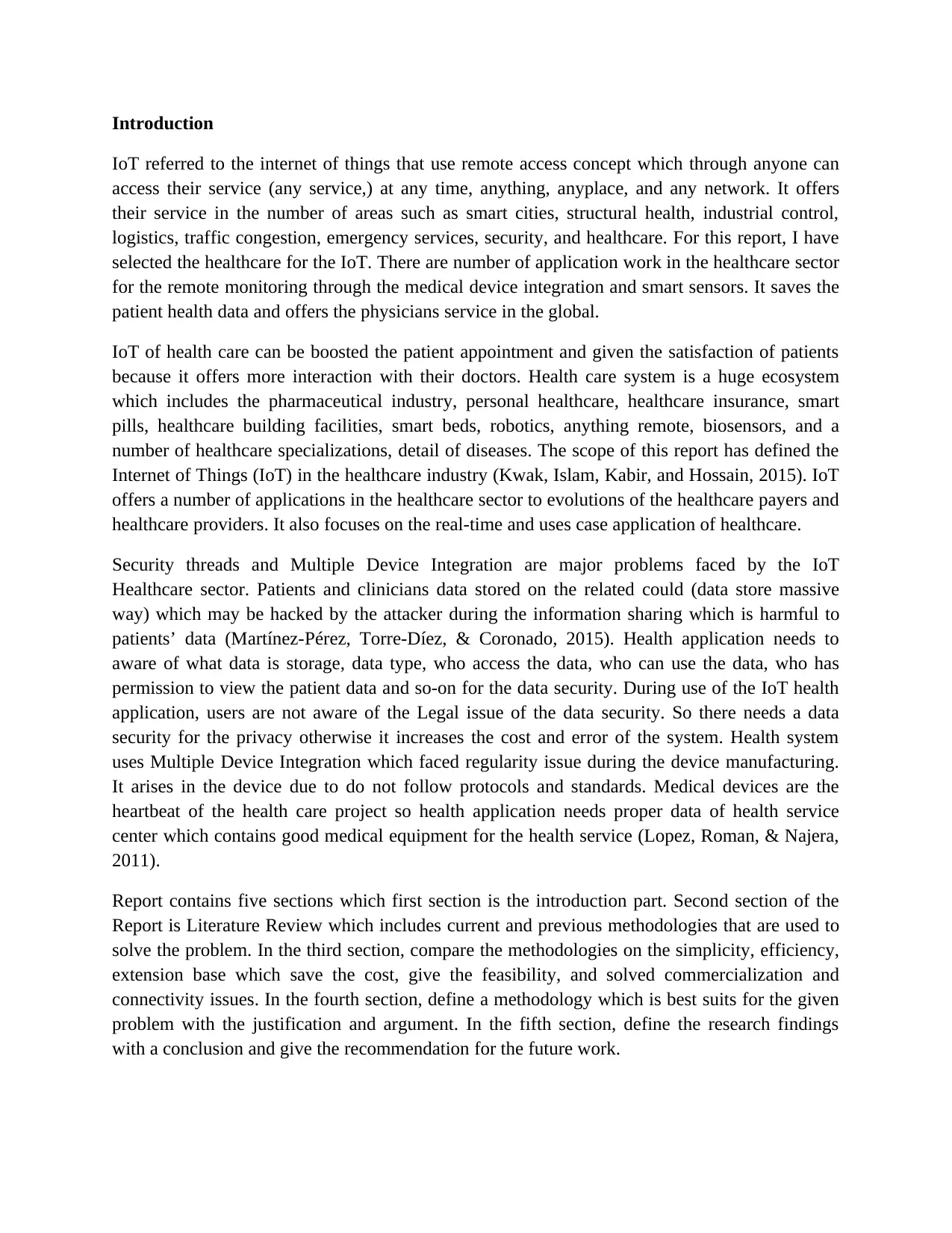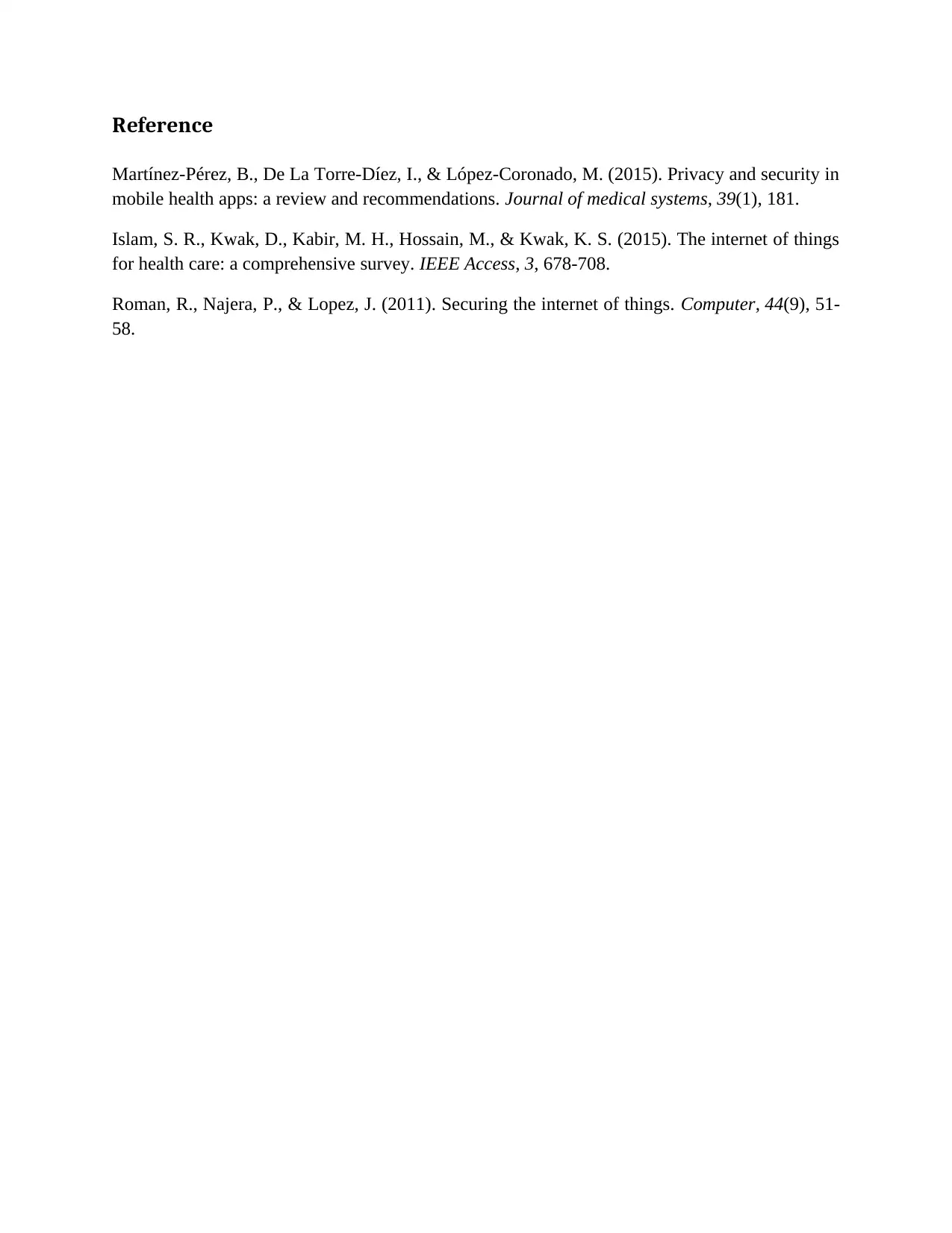ITC560 Report: IoT Applications, Security Issues in Healthcare Sector
VerifiedAdded on 2024/05/21
|2
|698
|320
Report
AI Summary
This report provides an overview of the Internet of Things (IoT) within the healthcare industry, focusing on its applications, security challenges, and future potential. It begins by introducing the concept of IoT and its relevance to healthcare, highlighting its ability to provide remote access to services and improve patient interaction with doctors. The report then delves into a literature review, comparing current and previous methodologies used in the field, and evaluating them based on simplicity, efficiency, and feasibility. It identifies a methodology best suited for addressing the identified problems and justifies its selection with arguments. The report also addresses the major challenges faced by the IoT healthcare sector, such as security threats and multiple device integration issues, emphasizing the importance of data security and adherence to protocols and standards in medical device manufacturing. The report concludes with research findings, recommendations for future work, and references to relevant sources.
1 out of 2








![[object Object]](/_next/static/media/star-bottom.7253800d.svg)